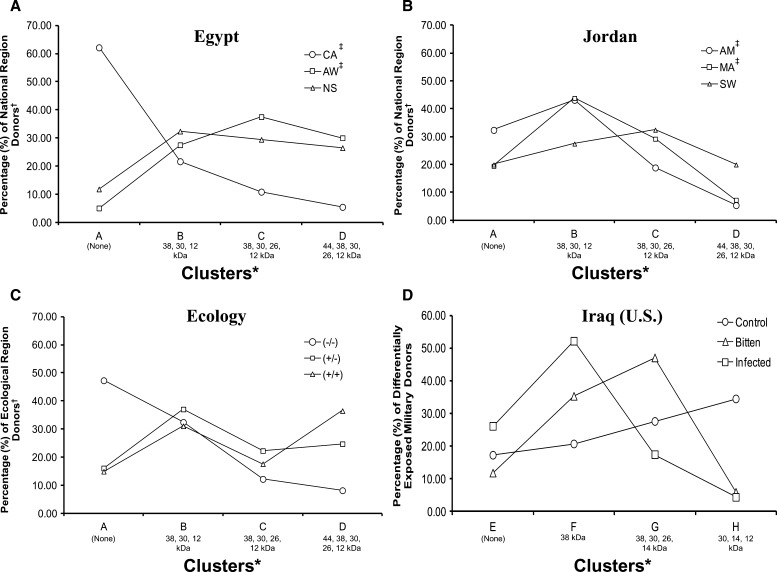Figure 3.
K-means clustering of total host plasma antibody specificity profiles to P. papatasi whole-salivary gland protein sonicates. Scores for human host plasma specificity to sand fly salivary proteins were separated by national and ecological region groups and then clustered by the k-means method across 1,000 iterations using Cluster v3.0, with k = 4 clusters and the Euclidean distance metric. (A) Total percentages of blood plasma donors from each Egyptian regional site assigned to each anti-SGS antibody specificity profile cluster by k-means clustering. (B) Total percentages of blood plasma donors from each Jordanian regional site assigned to each anti-SGS antibody specificity profile cluster by k-means clustering. (C) Total percentages of blood plasma donors from combined regional sites (grouped by defining ecological characteristics) (Table 1) assigned to each anti-SGS antibody specificity profile cluster by k-means clustering. (D) Total percentages of blood plasma donors from US military personnel differentially exposed to sand fly bites and Leishmania parasites assigned to each anti-SGS antibody specificity profile cluster by k-means clustering. *K-means cluster profile characteristics are outlined in Table 4. ‡A significant Pearson correlation was found between international donors from these sites.

